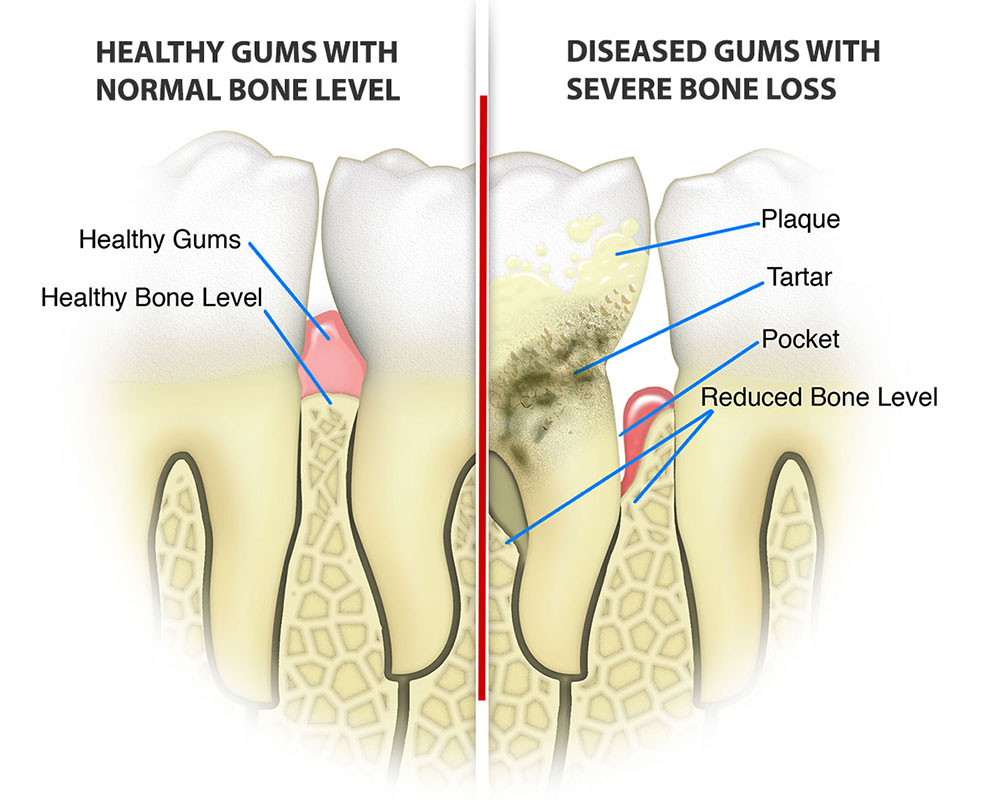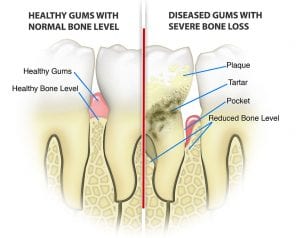Periodontitis, also commonly referred to as gum disease, is a serious condition that can result in tooth loss and damage of surrounding tissue. Periodontitis occurs when the inner layer of the gum and bone pull away from the teeth and form pockets where debris can be collected and form an infection.
Periodontitis often progresses while showing very subtle symptoms, so it’s very important to know what the warning signs are so that treatment can be obtained right away.
Warning signs of periodontal disease
There are general symptoms that may suggest that you may be experiencing an onset of gum disease. These include:
- Gums bleeding when brushing teeth
- Red, swollen, or tender gums
- Loose or shifting teeth
- Formation of pockets between teeth and gums
- Receding gums
- Chronic pattern of bad breath
It’s very important to note that these are symptoms that are associated with periodontitis. For a definitive diagnosis, it’s important to get thoroughly screened by a dental professional.
Causes of periodontal disease
In order to take preventative measures against periodontitis, you need to know what the main causes are, as a lot of the causal factors are related to behavioural or lifestyle patterns that can be corrected. Some of the causes of periodontitis include:
- Poor oral hygiene habits (ex. not brushing and flossing on a regular basis)
- Bad lifestyle habits (ex. smoking)
- Health conditions such as diabetes, cancer, or HIV
- Medications that limit saliva flow
- Certain medications that can cause abnormal gum tissue growth (such as certain anticonvulsant medications)
- Family / genetic predispositions
These are just general guidelines to identify potential symptoms of periodontitis, and to understand the key causes of the condition. As with any oral condition, it’s imperative to get thoroughly examined by a dental professional, in order to get a definitive diagnosis and specific treatment options.


